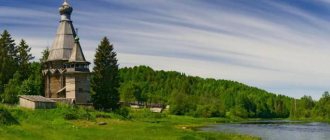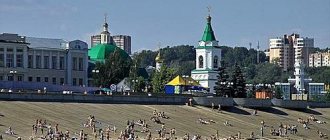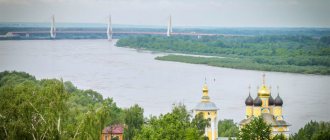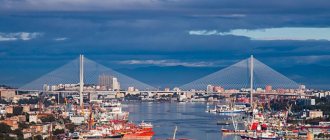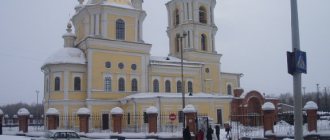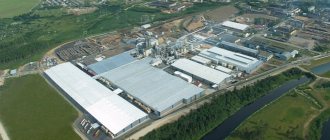Where is Barnaul located? What is the city famous for and how to get there? You will find answers to these and other questions by reading the article. In 1937, the Altai Territory was formed on the territory of the Russian Federation, where the city of Barnaul officially became the administrative center. Where is? The city is located on the banks of the Barnaulka River (the left tributary of the Ob River).
The article tells about the formation of this settlement and its attractions that attract the attention of guests and tourists interested in the history of Russia.
History of the city name
There are several versions of the city's name. The Siberian archaeologist Alexei Umansky at one time developed a version that states that since this region was once inhabited by a small Turkic people (Teleuts), the name came from the word “porongyul”. In translation it means: “porongy” - muddy water, and “ul” - river. This version is confirmed by the fact that in fact R. Barnaulka, on the banks of which the city stands, has muddy water. It is like this because of the large amount of organic and mineral substances mixed with river sand.
In topographic maps of the 18th century, the river was called Boronoul. Professor from Tomsk Dulzon gave an explanation. He said that the name of the geographical object consists of two words - “boro” (translated from Turkic as wolf) and “ul” (river). Thus, "Wolf River".
This professor confirms with documents that wolves lived in this region.
The most reliable version is considered to be the opinion of many historians who believe that the name is associated with the Barnaulka River.
History of Barnaul. Where is this area located?
In 1739, mining entrepreneur Akinfiy Demidov (son of the founder of the Demidov dynasty, Nikita Demidov), began construction of a copper and silver smelter, around which the Ust-Barnaul workers' village was formed on the site of the future regional center. Five years later, the plant began producing steel products.
Migrant workers from the regions of Central Russia and the Urals began to arrive in the village. Then the village, which became known as Barnaul, received the status of a mountain city in 1771. Urban infrastructure began to develop there. By 1893, natural resources were practically depleted, which led to the closure of the enterprise, and the city became one of the major merchant (trading) centers of Tsarist Russia.
After the revolutionary events of 1917, Barnaul became the center of the agro-industrial region. During the Second World War, more than a hundred major industrial enterprises from many cities in the front-line zones were evacuated to Barnaul (where the city is located, as was already mentioned above).
Now the main city of the Altai Territory, covering an area of 330 km², where more than 660 thousand indigenous people live, is considered industrial with a developed tourist infrastructure. The management of the travel agency organizes daily walking tours of the city, which has many interesting places that attract the attention of tourists and guests of the city.
Climate and ecology
The capital of the Altai Territory has an unusual geographical location, which affects its climate. It is exposed to air masses from the Atlantic, the steppes of Central Asia and the Arctic Ocean. Only the Altai Mountains protect it from the eastern winds. Therefore, the climate in the Barnaul region is sharply continental. It is characterized by significant contrasts in weather. There are moderately snowy, frosty winters and warm, moderately humid summers. The region has a fairly high rate of sunshine - 2180 hours, for example, in Sochi it is 70-80 hours more. Barnaul has pronounced seasonal variations; there is a noticeable difference between spring, summer, autumn and winter.
The ecological situation in the city is quite satisfactory. Since in the capital of the Altai Territory there have been noticeably fewer industrial enterprises in recent years, the air has become cleaner. In winter, the situation is only worsened by private houses that are heated with coal, but there are fewer and fewer of them due to gasification. Transport is a major contributor to air pollution, but is not currently an environmental problem. But the situation with solid household waste is acute. All areas around the city are turning into unauthorized landfills, and this has a negative impact on the condition of the unique belt forest, which goes directly to the city. The forest is also threatened by logging, which is being carried out for the construction of residential buildings.
Demidovskaya Square
The walking tourist excursion begins with the main attraction of the city - Demidov Square. It is located in the central part
In 1818, the managers of the Kolyvan-Voskresensky factories, Pyotr Frolov, proposed creating a square in Barnaul where an obelisk could be erected in honor of the 100th anniversary of the start of mining in the Altai region.
Initially the square was called Konyushennaya. Then it changed its name several times.
From 1992 to the present time, the main square of Barnaul is called Demidovskaya in honor of the founder of the city, Akinfey Demidov. Now it looks about the same as it did in past centuries.
Tourists can explore the buildings of the mountain hospital, mining school and home for the disabled. All these buildings date back to different years of the 19th century and have retained their original appearance.
Administrative division
The banks of Barnaulka are considered to be the place from which the city began to grow. The Ob River in Barnaul became a natural barrier that the city did not cross. Therefore, the entire settlement was located on the left bank of the large river. The city is divided into 5 administrative districts: Central, Zheleznodorozhny, Oktyabrsky, Leninsky and Industrial. The city also includes 24 settlements: the villages of Yuzhny, Borzovaya Zaimka, etc. The local population of Barnaul also divides the city according to the traditional names of settlements or places that are included within the city. So, here you can hear such toponyms as Aviator, Solnechnaya Polyana, VRZ, Sulima, Cheryomushki.
Altai Museum of Local Lore
On Polzunov Street there is the Altai State Museum of Local Lore. It is considered the first in Western Siberia. The opening took place in 1923.
The idea belonged to the manager of mining factories in the Barnaul region, Pyotr Frolov, and the naturalist scientist Friedrich Gebler. At that time the museum was called the “Mountain Museum”.
The exhibition was based on models of mining machines and various mechanisms of mining production and an extensive collection of minerals from the Urals.
Of great interest to visitors is the inspection of the first steam engine of the Russian inventor Ivan Polzunov. In 1766, this outstanding man built the first heat engine (steam engine) in Russia, which he invented, on the banks of Barnaulka.
Tourists are given the opportunity to examine models of industrial machines of the 18th-19th centuries and other various mining equipment of those times.
No. 1 in the world
There is a well-known fact: Ivan Polzunov, who served at the Barnaul copper smelter, invented the world's first two-cylinder steam engine. Meanwhile, another great inventor, Kozma Frolov, served in the Altai mountain district.
Among other things, he created the world's first design for an automatic fire extinguishing machine 250 years ago. True, the invention was not allowed to progress. And similar systems appeared only 100 years later in America.
After Frolov and Polzunov, we had other geniuses - it’s impossible to list them all. But Evgeny Strazdin gained international fame. In the late 1960s, he, a part-time student at the Altai Polytechnic University, figured out how to stop... the fall of the Leaning Tower of Pisa. Strazdin sent the project to the Italian Embassy.
Many years later, the Italians announced how they would stop the fall of the tower. And Strazdin recognized his project. He even wanted to prove his authorship in court, but abandoned this idea. By that time he was already a pensioner and had no money to conduct trials.
When preparing the material, we used the “Encyclopedia of Barnaul”, a book by journalist Anatoly Muravlev and his article in “Altai Pravda”, the publication of Andrei Lushnikov in the newspaper “Trud” and Andrei Vdovin’s selection from Altai newspapers of 1914.
Museum of Auto Theft named after. Yuri Detochkina
On Koptevskaya Street, in the building of the Favorit Motors car dealership, a kind of museum has been operating since 2003. It has become popular among tourists - the auto theft museum, named after the main character of the comedy "Beware of the Car". There is an exhibition of various master keys and devices used by car thieves in the city.
The museum was created on the initiative of the regional rescue service. She subsequently provided him with all the videos of the traffic accidents. Visitors can watch them in a specially equipped cinema hall.
Museum "City"
Having figured out where Barnaul is located, we’ll tell you about its other main attraction. At the corner of Lev Tolstoy Street and Lenin Avenue there is a building built in 1916, which at one time housed the City Duma.
Now the exhibitions of the City Museum are located here. Here, guests of the city, having visited it, can get acquainted with the history of Barnaul and the life of people whose activities are connected with the development of the region.
The main part of the collection consists of works of fine art of the 19th-20th centuries and an exhibition of archaeological finds from Altai.
Unique Feature
The city has a glorious history, but there is one distinctive feature that only Barnaul possesses throughout the Russian Federation. What area surrounds it? Barnaul urban agglomeration, consisting of two urban districts and one municipal district (the cities of Novoaltaysk, Barnaul, Pervomaisky district). The only territorial unit of Russia with a similar scheme, which has undergone the approval procedure at the Ministry of Regional Development, is located in the northeast of the Altai Territory. The population is quickly approaching one million. This is explained by the fact that the area is industrial and rich in minerals. In addition to cobalt, nickel, coal, iron ore and precious metals, the region where Barnaul appeared in 1730 is famous for its inexhaustible deposits of porphyry, jasper, rare marbles and drinking water reserves. It first appeared on maps of Russia in 1745 (in the Russian Atlas, published in St. Petersburg).
Znamensky Monastery
The religious attractions of the city include the active women's Orthodox Znamensky Monastery. A wooden temple was erected on the site of the future religious building in 1754.
In 1778 this small building was dismantled. Then a church with two altars was built on its foundation.
80 years later, a modern stone building was erected on this site. It was consecrated in honor of the icon of the Mother of God “The Sign”. At that time, three Orthodox schools and a library functioned at the cathedral.
In 1937, the temple was closed and used as the state archive of the Altai region. After 55 years, the religious building was returned to the Russian Orthodox Church (Russian Orthodox Church).
According to the decision of the administration of the Russian Orthodox Church (Holy Synod), since 1994 the Znamensky Cathedral has been transformed into a functioning convent. Tourists can explore the territory of the shrine and attend the liturgy, which takes place daily at certain hours.
Intercession Cathedral
We already know where Barnaul is located. Let's talk about one more of its attractions. Since 1898, in the western part of the city, at the expense of the population, on the site of the old wooden Church of the Intercession, construction began on the red brick four-altar Church of the Intercession. The cathedral was consecrated in 1904 in honor of the Intercession of the Holy Virgin.
In 1937 the temple was closed. And its building was used for city needs, and the frescoes that decorated the temple interior and the bell tower were damaged. In 1944, at the request of the diocese of Barnaul, services were resumed in the church. Then the gradual restoration of the church began, which lasted until 1993.
During this time, frescoes based on religious paintings by artists Viktor Vasnetsov, Ivan Kramskoy and other Russian painters, a bell tower and the building of a Sunday Orthodox school for youth of the Barnaul region were restored. Now the Intercession Cathedral is a functioning temple and is open to everyone.
Bankruptcies of former mayors
Having worked as a mayor, the man, understandably, made many connections. But connections did not save them from economic turmoil. The most high-profile bankruptcy stories in Barnaul were the cases of the trading houses “I. K. Platonov" and "Sukhov and Sons". These are all companies of former mayors.
Platonov was twice elected mayor. Sukhov was mayor once. Both worked as City Duma deputies of many convocations and had diversified businesses. Sukhov, for example, owned trade and, in addition, shoe production.
The trading house Sukhov and Sons was declared insolvent in 1911. Trading House "Platonov" - in 1912. It is known that Platonov’s bankruptcy was accompanied by scandals. The entrepreneur had a strong argument with his creditor, Sibtorgbank: the bank allegedly seized his famous power plant. The bank, of course, argued that the station rightfully belonged to it.
Trading house "Sukhov and Sons" in Barnaul. Subsequently a bakery. Etc. Lenina, 3.
retro. moi-barnaul.ru
How to get there?
Where is Barnaul located? In what area is the city located and how to get there? Those who want to relax in the nature of the Altai Territory, see the sights of the regional center - the city of Barnaul, and communicate with the hospitable indigenous population can use air services. The flight from Moscow will take approximately 4 hours.
You can also get from Moscow by train “Moscow-Barnaul” from Kazansky station. Travel time is 50 hours.
There is also an intercity bus service “Moscow-Barnaul” to Barnaul. Travel time is no more than 65 hours.
Things to do
The city is not only architecture and monuments, but also parks and squares. In Barnaul, the beautiful Ob embankment has recently been decorated, along which you can take pleasant walks. The city is located on the border with a unique ribbon forest, where you can also take pleasant walks. You can also spend a few pleasant days in sanatoriums and holiday homes. The Altai region is famous for its beautiful nature and there are several excellent places to relax right within the city limits. You can also go for a walk to the arboretum, which is especially beautiful in the spring, when many varieties of lilac, apple and cherry trees bloom.
